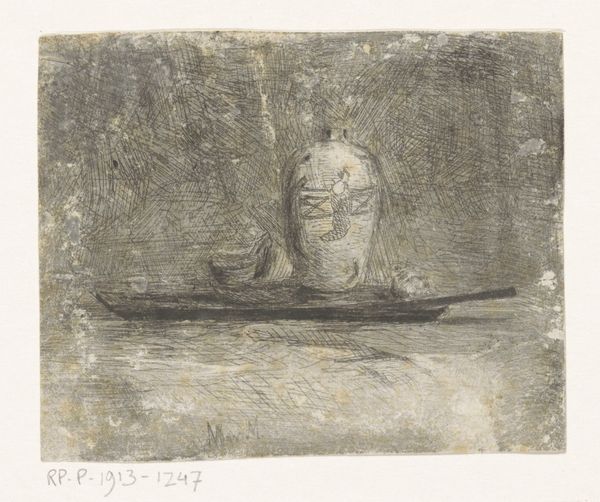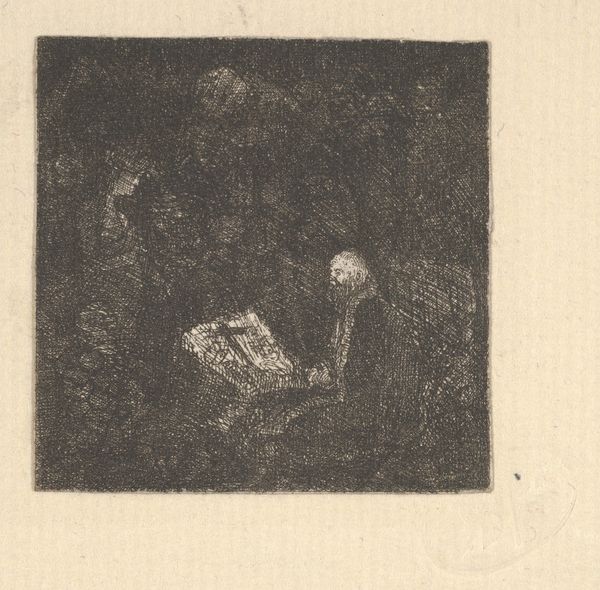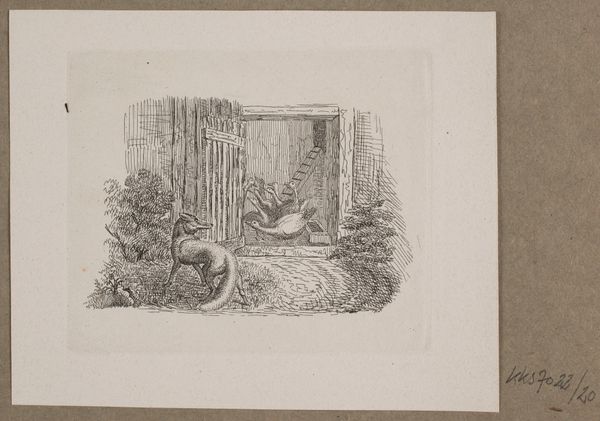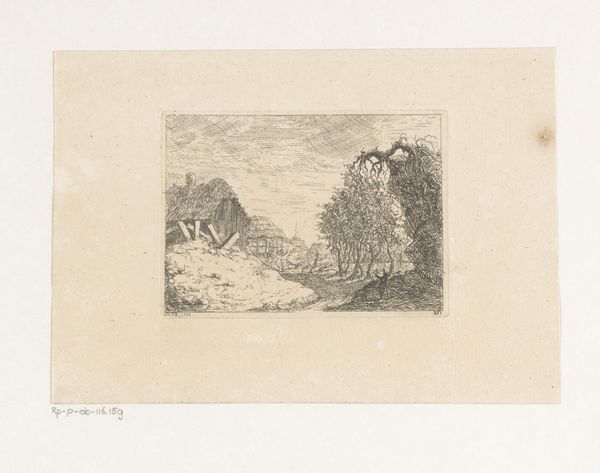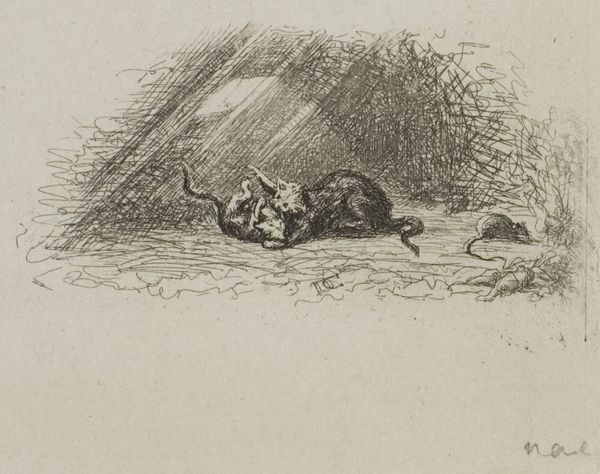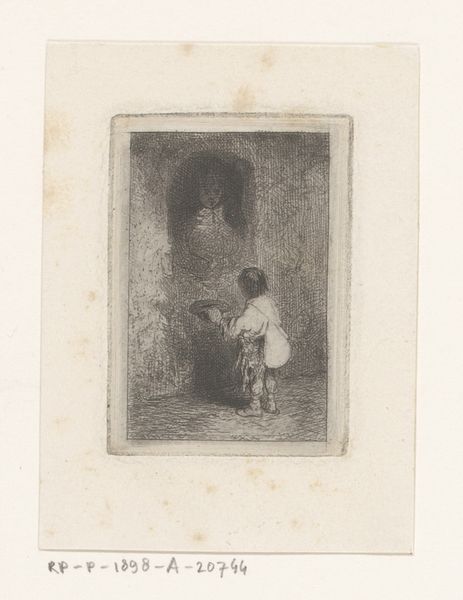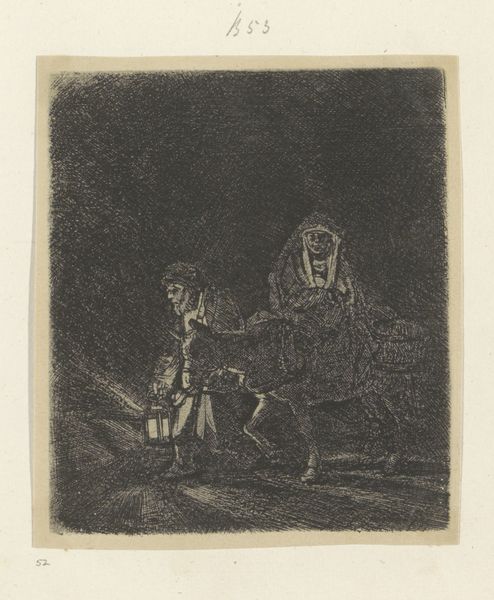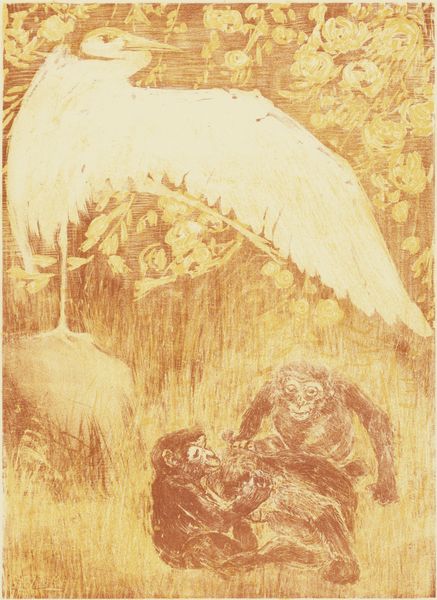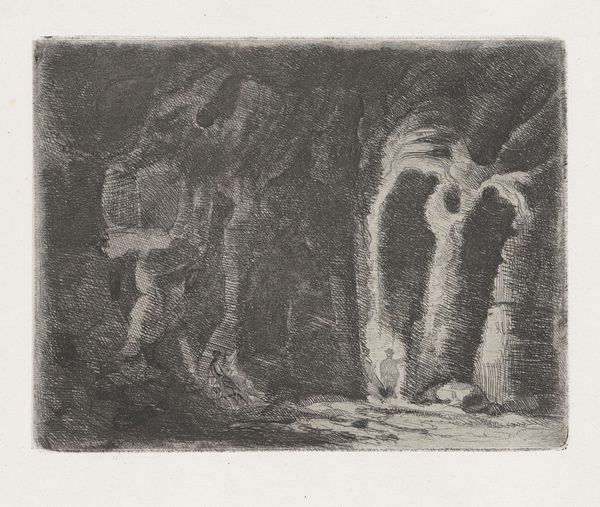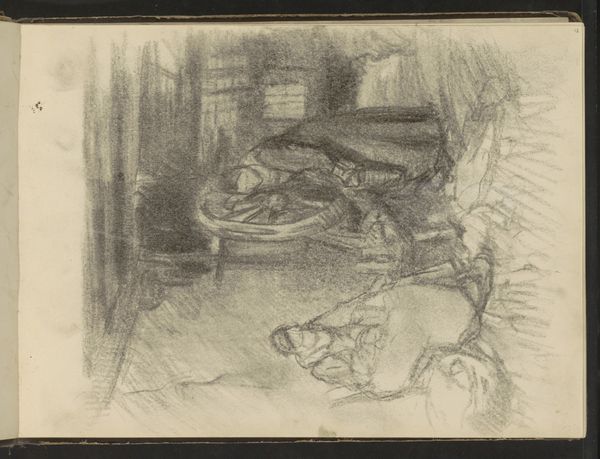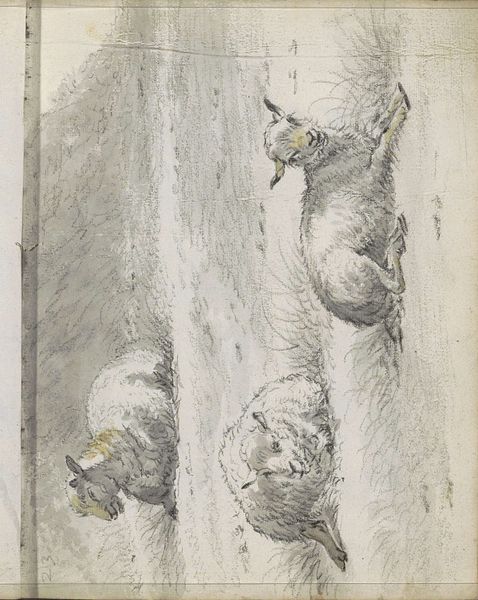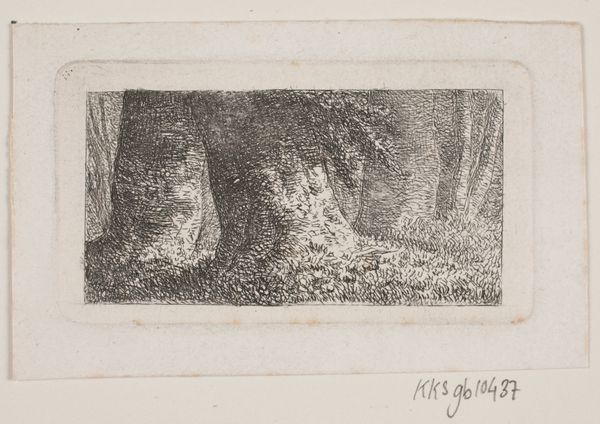
L'Ermite à la Tête de Mort (The Hermit with Skull) 1839 - 1885
0:00
0:00
Dimensions: Mount: 14 × 10 9/16 in. (35.5 × 26.8 cm) Sheet: 1 9/16 × 1 9/16 in. (4 × 4 cm)
Copyright: Public Domain
Curator: Rodolphe Bresdin’s “The Hermit with Skull,” made between 1839 and 1885, employs etching to create this intriguing image. The work resides here at the Metropolitan Museum of Art. Editor: Immediately, I'm struck by the sheer detail Bresdin manages to achieve through etching alone. The textures are so finely rendered! The overwhelming feeling I get is of somber reflection, the weight of mortality perhaps. Curator: Indeed. Considering the Romantic period he was a part of, the meticulous mark-making aligns with that focus, doesn't it? His dedication to crafting these tiny, incredibly precise lines is a form of labor-intensive production itself, a commitment to a traditional method. How does that contrast with contemporary printing? Editor: Well, the skull speaks volumes. As a vanitas symbol, it represents the transience of life, a very common subject through centuries. Bresdin cleverly integrates this age-old emblem into a scene with a bearded hermit. The figure becomes a contemplation on wisdom gained through isolation, the physical world and the intellectual, bound together in the singular symbol. Curator: What’s fascinating is how the materiality affects this interpretation. The black and white print reduces everything to stark contrast and texture. It creates a kind of flattened, almost claustrophobic feel. This affects not just how we perceive the subject but perhaps hints at a criticism of a more industrialized, less detail-oriented present in Bresdin’s moment. Editor: I agree about that affecting how we view the scene itself; look how the grotto above him feels at once sheltering, but also maybe like a cave trapping him there. It's almost dreamlike and speaks to the psychic impact of removing oneself from community to try and find peace. His clothing also mirrors his psychological state; his tunic falls around him almost like he is drowning in cloth. It is such a rich composition, dense in possible meaning. Curator: Precisely. By delving into the process and materials, we also reveal these deeper contextual and symbolic narratives present in the print. The etching itself, a manual, repetitive labor, mirrors the hermetic life, revealing how Bresdin's chosen medium reinforces the image’s message of contemplation and isolation. Editor: The symbolism within Bresdin's method is subtle. We can trace through our cultural awareness of art production our shifting notions around isolation, spiritual meaning, and history. A complex interplay between what's depicted, and what materials the artist uses, certainly! Curator: An examination like this also enables one to reconsider both Romantic art’s obsession with the individual experience but also that period’s simultaneous fascination with history and our relationship to production. Editor: Well put, that reading ties together what's there, but how our contemporary context allows it to resonate now too. Thank you.
Comments
No comments
Be the first to comment and join the conversation on the ultimate creative platform.
